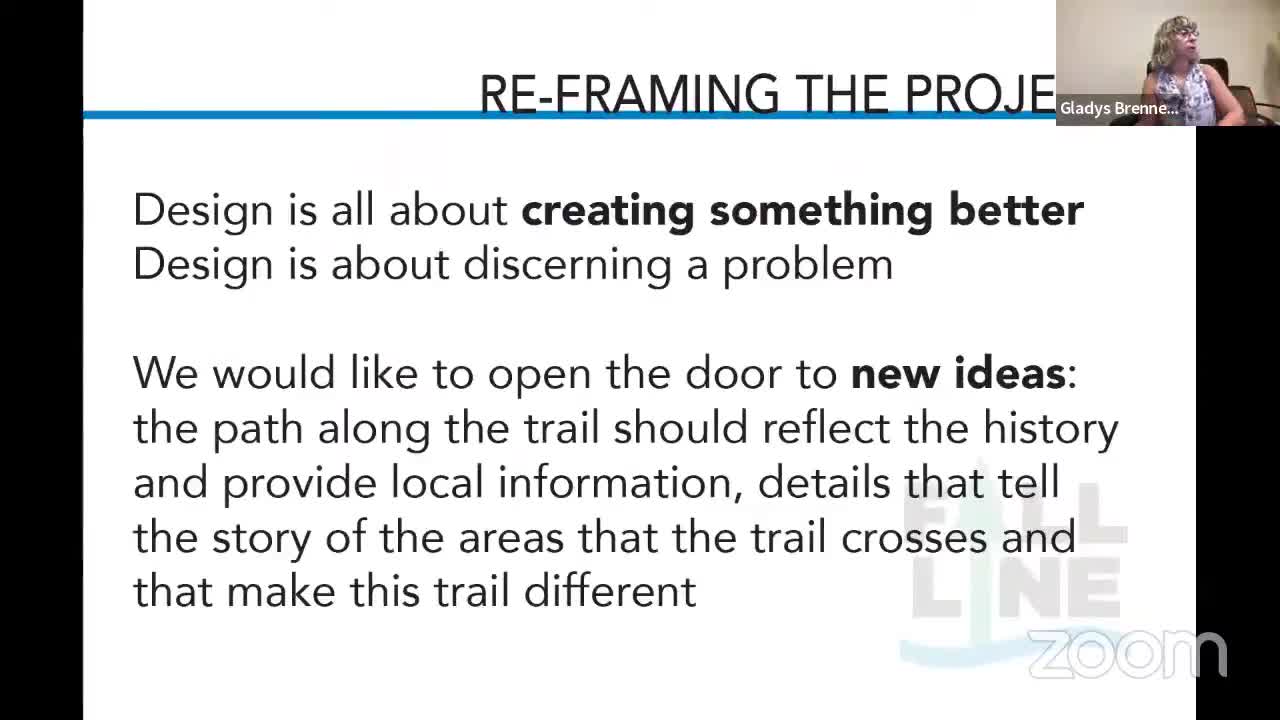Design team reimagines 43-mile trail to enhance community and environmental connection
September 07, 2023 | Central Virginia Transportation Authority, Boards and Commissions, Executive, Virginia
This article was created by AI summarizing key points discussed. AI makes mistakes, so for full details and context, please refer to the video of the full meeting. Please report any errors so we can fix them. Report an error »

During a recent meeting of the Fall Line Working Group, members discussed innovative design ideas for a new trail project aimed at enhancing community engagement and environmental sustainability. The group emphasized the importance of creating a trail that not only serves as a pathway for walking and biking but also tells the story of the local history and ecology.
One of the key proposals involved integrating historical images and information along the trail, reflecting the rich heritage of areas such as Ashland, Petersburg, Richmond, and Hanover. This approach aims to connect users with the cultural significance of the land they traverse, fostering a deeper appreciation for the community's past.
The group also highlighted a shift from human-centered design to life-centered design, which considers the needs of all living beings in the area, including plants, animals, and the environment. This perspective encourages the trail to serve as a connector for communities while promoting environmental stewardship.
In addition to historical and ecological considerations, the group addressed practical aspects of trail use, such as illumination. With sections of the trail that may be dark during early evening hours, the need for effective signage and lighting solutions was discussed. Suggestions included exploring solar panel options for sustainable illumination, ensuring safety and accessibility for all users.
The overarching goal of the project is to create an inclusive, engaging, and sustainable space that encourages residents to leave their cars behind and embrace walking or biking. By focusing on diversity, equity, and inclusion, the trail aims to be a joyful experience for everyone, enhancing the community's connection to nature and each other.
As the project moves forward, the Fall Line Working Group is committed to ensuring that the trail not only serves as a means of transportation but also enriches the lives of those who use it, creating a shared space that reflects the community's values and aspirations.
One of the key proposals involved integrating historical images and information along the trail, reflecting the rich heritage of areas such as Ashland, Petersburg, Richmond, and Hanover. This approach aims to connect users with the cultural significance of the land they traverse, fostering a deeper appreciation for the community's past.
The group also highlighted a shift from human-centered design to life-centered design, which considers the needs of all living beings in the area, including plants, animals, and the environment. This perspective encourages the trail to serve as a connector for communities while promoting environmental stewardship.
In addition to historical and ecological considerations, the group addressed practical aspects of trail use, such as illumination. With sections of the trail that may be dark during early evening hours, the need for effective signage and lighting solutions was discussed. Suggestions included exploring solar panel options for sustainable illumination, ensuring safety and accessibility for all users.
The overarching goal of the project is to create an inclusive, engaging, and sustainable space that encourages residents to leave their cars behind and embrace walking or biking. By focusing on diversity, equity, and inclusion, the trail aims to be a joyful experience for everyone, enhancing the community's connection to nature and each other.
As the project moves forward, the Fall Line Working Group is committed to ensuring that the trail not only serves as a means of transportation but also enriches the lives of those who use it, creating a shared space that reflects the community's values and aspirations.
View the Full Meeting & All Its Details
This article offers just a summary. Unlock complete video, transcripts, and insights as a Founder Member.
✓
Watch full, unedited meeting videos
✓
Search every word spoken in unlimited transcripts
✓
AI summaries & real-time alerts (all government levels)
✓
Permanent access to expanding government content
30-day money-back guarantee

